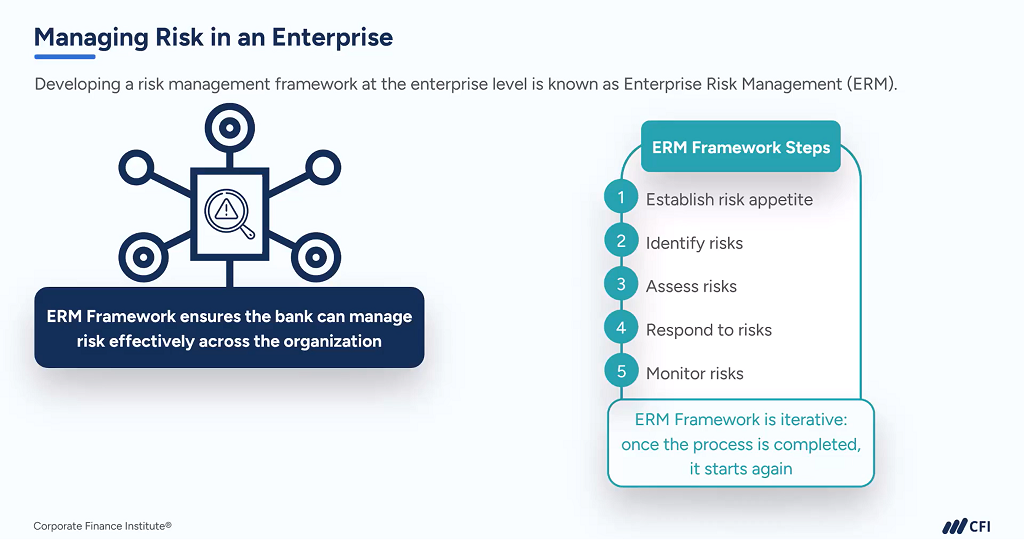A Detailed Guide to Understanding the Importance of Risk Management
A Detailed Guide to Understanding the Importance of Risk Management
Blog Article
Exploring the Relevance of Risk Management for Effective Decision-Making Techniques
In the intricate world of organization, Risk Management becomes an important variable in the decision-making process. The ability to determine possible hazards and opportunities, and strategize accordingly, can mean the difference between success and failing. With tools such as SWOT and PESTEL, companies are outfitted to make enlightened choices, promoting resilience and versatility in an ever-changing setting. Wondering how this works? Allow's unpack the dynamics additionally.
Understanding the Idea of Risk Management
Risk Management, a vital component in decision-making, is commonly misconstrued or oversimplified. Risk Management entails organized and disciplined techniques, utilizing information and insightful assessments. From monetary uncertainties, lawful responsibilities, calculated Management errors, to mishaps and all-natural catastrophes, it addresses different threats - importance of risk management.
The Role of Risk Management in Decision-Making Processes
In the realm of tactical planning and business operations, Risk Management plays an indispensable duty in decision-making processes. Risk Management thus comes to be a crucial device in decision-making, assisting leaders to make enlightened options based on a thorough understanding of the dangers involved. Risk Management serves as a vital part in the decision-making procedures of any type of company.

Just How Risk Management Enhances Strategic Preparation
In the context of tactical preparation, Risk Management plays a crucial duty. Starting with the identification of possible dangers, it better includes the application of Risk reduction steps. The role of Risk Management is vibrant however not static, as it requires constant surveillance and adjusting of methods.
Determining Prospective Threats

Implementing Risk Mitigation
Having actually developed the importance of identifying potential risks, the next step is to explore Risk reduction. This process includes establishing and carrying out methods to take care of recognized dangers successfully. It is a vital facet of critical preparation as it boosts decision-making by decreasing possible unfavorable results. Risk reduction approaches can vary from Risk evasion, Risk transfer, to run the risk of reduction. Each technique ought to be tailored to the details Risk, considering its prospective impact and the company's Risk tolerance. Effective Risk mitigation requires a deep understanding of the Risk landscape and the prospective impact of each Risk. This understanding allows organizations to prioritize risks and allocate sources efficiently, guaranteeing that the most substantial dangers are attended to first.
Tracking and Readjusting Methods
Though Risk mitigation is an essential action in tactical preparation, constant surveillance and adjustment of these methods is equally crucial. This recurring process enables organizations to recognize new threats and reassess existing ones, making visit our website sure the implemented techniques continue to be effective in the ever-changing organization environment. It likewise offers a chance to assess the success of the Risk Management actions, enabling modifications to be made where essential, additional enhancing calculated planning. Effective tracking and modification need using analytics and essential efficiency indicators (KPIs) to measure effectiveness. These devices give useful data-driven understandings that can educate tactical decision-making. Surveillance and readjusting Risk Management approaches is a critical part for improving a company's strength and critical preparation.
Instance Researches: Effective Risk Management and Decision-Making
In the globe of organization and financing, successful Risk Management and decision-making typically offer as the pillars of flourishing business. These instances highlight the value of astute Risk Management in decision-making processes. These instances underscore the essential function of Risk Management in calculated decision-making.
Tools and Strategies for Efficient Risk Management
These tools, such as Risk signs up and heat maps, aid in determining and analyzing prospective dangers. Risk reaction techniques, a key element of Risk Management, entail approving, staying clear of, moving, or mitigating threats. With these devices and techniques, decision-makers can browse the facility landscape of navigate to this site Risk Management, thus assisting in notified and efficient decision-making.
Future Patterns in Risk Management and Decision-Making Strategies
As we explore the large landscape of Risk Management, it ends up being obvious that the tools and techniques used today will certainly remain to progress. Future patterns point in the direction of an increased dependence on innovation, with man-made knowledge and maker knowing playing significant duties. These innovations will make it possible for companies to predict possible dangers with higher accuracy and make more enlightened decisions. In addition, there will certainly be a growing focus on resilience, not simply in handling risks but additionally in bouncing back from adverse scenarios. Lastly, the principle of Risk culture, where every participant of an organization realizes and included in Risk Management, will obtain a lot more importance. These patterns declare an even more comprehensive and positive strategy towards Risk Management and decision-making.
Verdict

Risk Management therefore ends up being a crucial device in decision-making, helping leaders to make educated selections based on a comprehensive understanding of the importance of risk management risks entailed. Risk mitigation techniques can range from Risk evasion, Risk transfer, to run the risk of reduction (importance of risk management). Reliable Risk mitigation calls for a deep understanding of the Risk landscape and the prospective influence of each Risk. Risk action methods, an essential component of Risk Management, entail accepting, avoiding, moving, or mitigating risks. The principle of Risk society, where every member of a company is conscious and involved in Risk Management, will certainly gain extra importance
Report this page